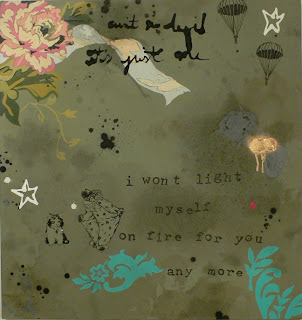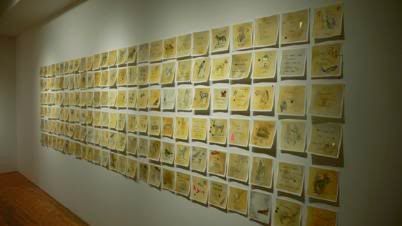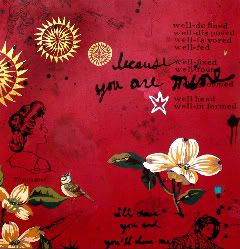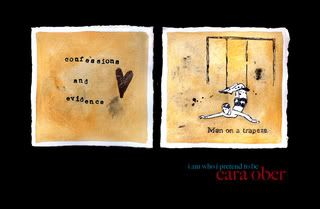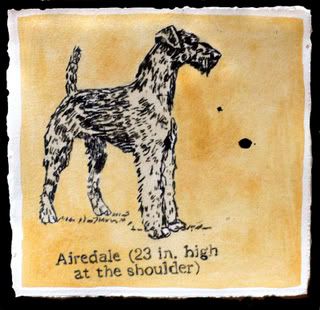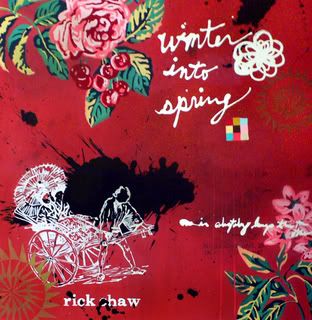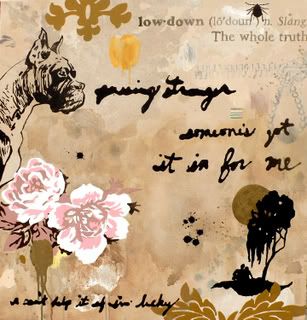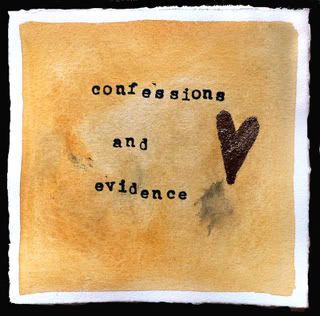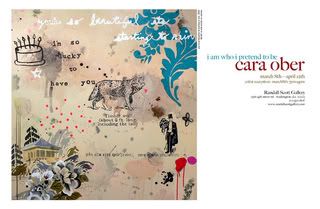Cara Ober
3113 N. Calvert Street
Baltimore, MD 21218
Website: www.caraober.com
Email: cara_ober@yahoo.com
Blog: http://bmoreart.blogspot.com
Blog: http://caraober.blogspot.com
EDUCATION
2002-2005 M.F.A. in Painting. Maryland Institute College of Art.
1996-1998 M.S. in Art Education. Western Maryland College.
1992-1996 B.A. in Fine Art. Phi Beta Kappa. American University.
AWARDS
2008 Baltimore City Art Grant for Paperwork Gallery.
2008 Baltimore City Art Grant for the Bmore Art Blog.
2007 Best in Baltimore Award. Baltimore City Paper. “Best Use of Band Width” for the BmoreArt Blog.
2007 Second Place. Bethesda Painting Awards. Fraser Gallery. Bethesda, MD.
2006 Individual Artist Grant Recipient for Painting. Maryland State Arts Council.
2006 Warhol Grant Recipient for Emerging Curators. DC Arts Center. Wash, DC.
2006 Best in Show Award. Juried Painting Exhibit. Target Gallery. Alexandria, VA.
2006 Semi-Finalist. Bethesda Painting Awards. Fraser Gallery. Bethesda, MD.
2005-2002 Surdna Fellowship Recipient. MICA Tuition Scholarship.
2004 Juror’s Choice Award. Circle Gallery. Fall Juried Show. Baltimore, MD.
1996 Ellen Van Swinderen Art Award. American University Graduation.
EXHIBITIONS
Solo / Two-Person Exhibitions
2008 New Works. Artizen Fine Arts Gallery. Dallas, TX.
2008 New Works. Matre-Linstrum Gallery. Atlanta, GA. September.
2008 I Am Who I Pretend to Be: New Paintings and Works on Paper by Cara Ober. The Randall Scott Gallery. Washington, DC. March 8 – April 11.
2007 Cursed Blessing: Cara Ober and Tung Lo. Gallery Imperato. Baltimore, MD. August 15 – September 30.
2007 Prayers and Joking: New Works by Cara Ober. Flashpoint Gallery. Washington, DC. January.
2006 Moving Sideways: Cara Ober. Moxy Studios. New Orleans, LA. December.
2006 An Accumulation of Little Things: Collaboration with Julie Benoit. Lump Gallery. Raleigh, NC. June.
2005 Passing Notes: A Visual Collaboration by Cara Ober & Julie Benoit. Spare Room Installation Space. Baltimore, MD. October – November.
2005 To Live Outside the Law… MFA Thesis Exhibition. Meyerhoff Gallery. Baltimore, MD. Maryland Institute College of Art. June 28 – July 8.
2004 Secret Signs: New Paintings and Collaborative Works by Cara Ober and Julie Benoit. G-Spot Audio Visual Playground. Baltimore, MD. February.
Juried Exhibitions
208 Penned: An Artscape Juried Exhibition. Bunting Gallery. Baltimore, MD. July.
2008 Studio Visit Magazine: Volume One. A Juried Exhibition in Print.
2007 Bethesda Painting Awards. Exhibit of Finalists. Fraser Gallery. Bethesda, MD. June 6 – July 8. Jurors: W.C.Richardson, Dr. Brandon Fortune, Tanja Softic.
2006 Test Patterns. Artscape Public Art Exhibition. Bunting Gallery, MICA. July.
2006 Stretched Tight. Target Gallery. Torpedo Factory, Alexandria, VA. February 24 – March 26. Juror: Jack Rasmussen.
2005 MFA Graduate Exhibition. Arlington Arts Center. Arlington, VA. July 19 – August 27.
2005 Systematic. Delaware Center for Contemporary Art. Wilmington, DE. Juried Exhibition. Juror: Kristen Hileman. February – April.
2004 Fall Juried Show. Maryland Federation of Art. Circle Gallery. Baltimore, MD. October 1 - 30. Juror Gerald Ross. *Juror’s Choice Award.
2003 Critic’s Picks: Artist in Residency Program. Maryland Art Place, Baltimore, MD - March 23 - April 17. Curators: Carter Ratcliff and Eugene B.Redmond.
2003 Emerging Artists: Juried Show. Maryland Federation of Art, City Gallery, Baltimore, MD. Juried by Susan Isaacs. March 5 - April 5. Spring Juried Exhibition. Juried by Virginia Shore, May 28 - June 28.
2002 Definitions: MAEA. Contemporary Museum, Baltimore, MD. November 9 - December 21. Juror: Helen Molesworth.
Group Exhibitions / Art Fairs
2008 Seven Deadly Sins. Maryland Art Place. November.
2008 MICA Trawick Award Winners. Center Club. Baltimore, MD. Curated by Tracy Lambros and MICA. September.
2008 Summer Group Show. Gallery Imperato. Baltimore, MD. July – August.
2008 Song Catcher. Lark & Key Gallery. Charlotte, NC. July – August.
2007 Aqua Wynwood. Art Basel. Miami Week. December 4 – 9. Booth 29 – The Randall Scott Gallery. Miami, FL.
2007 Bridge Art Fair. London, UK. Trafalgar Hotel. October 11 – 14. Room 718. The Randall Scott Gallery.
2007 Fall Group Show. Artizen Fine Arts. Dallas, TX. September 8 – October 7.
2007 MSAC 40th Anniversary Exhibit. James Backus Gallery. Baltimore, MD. September – December. Curator: Oletha DeVane.
2007 Riviera Real Estate. Riviera Gallery. Brooklyn, NY. September- October.
2007 Anonymous III. Flashpoint Gallery. Washington, DC. June 1 – 30.
2007 Fresh Art. Karin Sanders Gallery. Sag Harbor, NY. May 26 – June 20.
2007 I Believe: 14 Painters. Creative Alliance at the Patterson. Baltimore, MD. May.
2007 DC Art Fair. Randall Scott Gallery booth. Washington, DC. April 28 - 31.
2007 The Living Room. The Randall Scott Gallery. Washington, DC. April-May 19.
2007 Fresh Paint. Arlington Arts Center. Arlington, VA. December 5, 2006 –Jan.2007.
2006 MAP turns 25. Maryland Art Place. Baltimore, MD. November 1 – December 15.
2006 Mostre Rossi (The Red Show) Ferrara, Italy. October 5 – 24.
2006 Fall Preview. Moxy Studios. New Orleans, LA. September 5 – 30.
2006 New Western Art: A Twentieth Century Perspective. Studio Gallery 27. Steamboat Springs, CO. July 1 – 30.
2006 Riviera Triennial. Riviera Gallery. Brooklyn, NY. May 4 – 21.
2006 Femme Effect Part Deux. Gallery Imperato. Baltimore, MD. March 1 – 30.
2006 Born to be Wild. Studio Gallery 27. Steamboat Springs, CO. January 21 – 26.
2006 Hopes and Schemes: Paintings, Drawings, and Prints. The Riviera Gallery. Brooklyn, NY. January 13 – 29.
2005 By Invitation Only. Maryland Art Place. Baltimore, MD. November 1- 30.
2005 Birds of a Feather. Tribes Gallery. 285 East 3rd Street, New York, NY. August.
2005 Under Construction. Current Gallery. Baltimore, MD. September.
2005 Spring Group Show. Cubicle 10. Baltimore, MD. May 1 – June 18.
2005 Picture Window. Area 405, Baltimore, MD.
2004 Systems, Codes, Chaos. Seed Vector Gallery Space. Baltimore, MD. October.
2004 a journey. Chela Gallery. Baltimore, MD. March 6 - March 30.
CURATORIAL EXPERIENCE
2008 Elena Volkova: Waterlines. Paperwork Gallery. Baltimore, MD. February.
2007 Quintessence. Paperwork Gallery. Baltimore, MD. December.
2007 The Jolly Cowboy. DC Arts Center.Warhol Grant Curatorial Initiative. March 8–April 8.
2006 Arbitrary Specifics. Sub-Basement Studios. Baltimore, MD. June 1 – July 1.
2006 Liquid / Solid: New Contemporary Works by Abstract Painters. Rice Gallery. McDaniel College. Westminster, MD. May 1 – June 1.
2006 From Sea to Shining Sea. DC Arts Center. Warhol Grant Curatorial Initiative Program. March 31 – April 23.
2005 Prodigal Summer. G-Spot Audio-Visual Playground. Baltimore, MD. July 1 – 30.
2004 Inward Gazes: Creating Pieces of the Identity Puzzle. Rosenberg Gallery. Goucher College. Baltimore, MD. Nov. 1 - Dec. 15.
TEACHING & PROFESSIONAL EXPERIENCE
2008–2007 Co-Director and Founder, Paperwork Gallery. Baltimore, MD.
2008-2007 Programming Committee. Maryland Art Place.
2008-2005 Adjunct Professor. Maryland Institute College of Art. Sophomore Painting, Painting Two, The Artist’s Way Workshop, Art and Professionalism (Graduate), The Sketchbook, and Art and Human Development (Art Education)
2008 Adjunct Professor. Loyola College. Drawing 1 and Design 1.
2008-2006 Adjunct Professor.The Johns Hopkins University. Introduction to Watercolor.
2008-2005 Adjunct Professor. Towson University. Drawing 1 and 2
2008 Adjunct Professor. Loyola College. Design 1 and Drawing 1
2007-2005 Adjunct Professor. Anne Arundel Community College. Color Theory and Design
2007 Guest Lecturer. American University. Slide lecture & studio visits for MFA.
2005 Adjunct Professor. University of Maryland, Baltimore County. Ideas in the Arts
2005 Guest Lecturer and Critic. McDaniel College. Slide lecture and critiques. Fall
PRESS COVERAGE
2008 Washington Post Express. ”Cara Ober is who she pretends to be” by Fiona Zublin. April 9.
2008 The DCist Magazine. “Interview with Cara Ober” by Amy Cavanaugh. March 31.
2008 The Baltimore Sun. “Critical Mass: Pretending Not to Notice” by Glen McNatt.
2008 The Urbanite. Have You Heard? “Modest Masterpiece” by Marianne Amoss. February Issue.
2008 The Baltimore City Paper. “The Real World.” by Bret McCabe. January 30.
2008 The Washington City Paper Blog/ Grammar Police. “The Sincerest Form of Flattery?” by Kriston Capps. January 28.
2008 The Washington Post. “Look Alike Works Make for an Uncommonly Provocative Show.” By Blake Gopnik. January 26.
2008 The Baltimore Sun. “In the Eye of the Beholder.” By Sam Sessa and Glen McNatt. January 25.
2007 The Baltimore City Paper. “Dream Catchers” by Deborah McLeod. Sept. 5.
2007 The Baltimore City Paper. “Cursed Blessing” by Bret McCabe. August 22.
2007 The Washington Post. “In Painting Awards, Unexpected Outcomes” by Michael O’Sullivan. June 15.
2007 The Independent Newspaper. Hamptons, NY. “In the Gallery” by Joan Baum. June 6.
2007 The Urbanite Magazine. “Eye to Eye.” By Alex Castro. May 1.
2007 The Georgetown Voice. “I wanna be a cowboy, baby” by Madeline Anne Reidy. April 1.
2007 Gazette.Net. “Artists Ask Open Questions in Three Area Exhibit” by Claudia Rousseau. Wednesday, March 21.
2007 The Examiner. “Takes on Token: Object of Affection, Aggression, Reflection” by Robin Tierney. March 24.
2007 The Georgetown Voice. “A Local Artist’s Guide to Suburbia” by Madeline Reidy. January 25.
2007 Washington City Paper. “Prayers and Joking” by Kriston Capps. January 24.
2006 Baltimore City Paper. July 26. “Great Outdoors by Bret McCabe.
2006 Peek Review Volume Five. “Arbitrary Specifics Group Exhibition Review” and “Interview with Curator Cara Ober” by Jack Livingston. www.peekreview.net
2006 Baltimore City Paper. June 26. “Underworld: Edgy Underground Group Show Well Suited to Gallery Space” by J. Bowers on Arbitrary Specifics at Sub-Basement Studios.
2006 Baltimore City Paper. March 15. “Femme Effect Part Deux” by J. Bowers.
2006 Baltimore City Paper. March 1. Critics Picks: Femme Effect Part Deux at Gallery Imperato. By Mike Guliano.
2005 Baltimore Sun. November 2. “Daring Exhibits launch new art center at Towson.” By Glen McNatt.
2005 Baltimore City Paper. October 13. Critics Picks: “Passing Notes: A Visual Collaboration” by Bret McCabe.
2005 3rd Floor: A Portable Art Space. September Issue. Artist Bio and Color Reproduction of the oil painting “Carrier.”
2005 Washington Post. “On Exhibit: New Sensations” by Michael O’Sullivan. Review of 3 DC Exhibits of recent art school graduates at Arlington Arts Center, Irvine Contemporary, and Connor Contemporary Art.
2004 Baltimore Sun. December 9. “Intimate and Unsettling.” Review of Inward Gazes by Glen McNatt.
2004 Radar Review. Issue 12, December. “Inward Gazes” by Lauren Bender.
2004 Baltimore City Paper. October 13. “Seeds of Promise.” Review of Seed Vector Show by J. Bowers.
2004 Baltimore City Paper. October 6. “Critics Picks: Art.” Review of Matchbook at Spare Room.
2004 Baltimore City Paper: March 17. “Journey: A Traveling Art Show.” Review by Blake de Pastino.
2004 Baltimore City Paper: February 25. “Secret Signs: Paintings and Collaborative Works by Julie Benoit and Cara Ober.” Review by Ned Oldham.
2003 Radar Magazine: Issue 6, 2003. Review of Group Show at City Cafe
by Lauren Bender.
2003 Maryland Art Place Critics in Residency Catalogue. “A Critic’s Notes” by Carter Ratcliff.
2003 Maryland Art Place Critics in Residency Catalogue. “Cara Ober” by David Page.
2003 Link Magazine Issue 8: Codex. MAP’s Critics in Residency program.
2003 Baltimore City Paper, March 19. “Critics Picks: Art.” Review of MAP Critics in Residency show.
2003 Radar Magazine: Issue 5, 2003. Preview of MAP Show.
PUBLISHED WRITING
Blogs
BmoreArt – Blog. http://bmoreart.blogspot.com - ongoing – various essays and reviews.
The Examiner Newspaper Art Blog. www.examiner.com. Various essays and reviews.
Exhibition Essays
Women’s Work: Char Brooks & Annie Waldrop. Rosenberg Gallery, Goucher College. September, 2007.
The Jolly Cowboy. Curatorial Essay for The Jolly Cowboy Catalogue at the DC Arts Center. Washington, DC. March, 2007.
Token. Exhibition Essay for ‘Token’ Exhibit at Pyramid Atlantic. Silver Spring, MD. March, 2007.
Magazines:
Art US Magazine. www.artext.org. Full Color Monthly Art Magazine, published in Los Angeles.
April 2007 Issue. Review of ‘Denise Tassin: Fairyland’ at Spare Room.
January 2007 Issue. Review of ‘Dan Steinhilber: Project Room’ at the BMA.
April 2006 Issue. Review of ‘Louise Bourgeois: Femme’ at the Walters Art Gallery.
January 2006 Issue. Review of ‘Blur of the Otherworldly’ at UMBC.
Art Papers. www.artpapers.org. Full Color Bi-Monthy Art Magazine, published in Atlanta.
September 2005 Issue. Review of ‘Artscape at BMA/Observation Deck.’
July 2005 Issue. Review of ‘Transmodern Age’ performance art festival.
Peek Review. www.peekreview.net. Online Art Magazine.
January, 2006. Best of 2005: A Year in Review.
May, 2005. Review of ‘Directions’ Show at the Hirshhorn Museum, featuring Cai Guo-Qiang.
Urbanite Magazine. www.urbanitebaltimore.com. Full Color Monthly Baltimore Magazine.
September 2005 Issue: Baltimore Fashion: Local Events, Designers, and Businesses.
June 2005 Issue: 3rd Story Arts Journal, A New local Art Publication.
May 2005 Issue: The Punk Rock Photography of Jim Jocoy at the G-Spot Audio/Visual Playground.
March 2005 Issue: Up and Coming. Writer of TURF: Trans Urban Roaming Forum, a NY Arts Advocacy Program.
Radar Review. www.radarreview.net. Local, bi-monthly critical arts review.
Issue 12. Critical Review on Connor Contemporary Art Gallery.
Issue 11. Writer of a critical preview of Kerry James Marshall: One True Thing at the BMA.
Issue 11. Online follow-up at www.RadarReview.net. Writer of a review of Kerry James Marshall: One True Thing at the BMA. 2005.
Issue 10. Writer of critical review on Lauren Schott, Sculptor and Jewelry Maker. 2004.
Issue 9. Writer of critical review on Jack Eisenberg, Photojournalist at the Beveled Edge. 2004.
Issue 8. Writer of critical review “Golden Blessings/ Out of the Mouths of Babes.” American Visionary Art Museum. 2004.
Issue 8. Writer of critical review of Cindy Rehm’s “Synonym of Hunger” at spare room installation space. 2004.
Newspapers:
Baltimore City Paper.
July 21. 2004. One of three writers of “Art Scrape.” Reviewed Phenomenology at MICA’s Meyerhoff Gallery.
June 23. 2004. Writer of “Bittersweet: School 33’s Annual Juried Exhibition.” Juror: Ingrid Schaffner.








